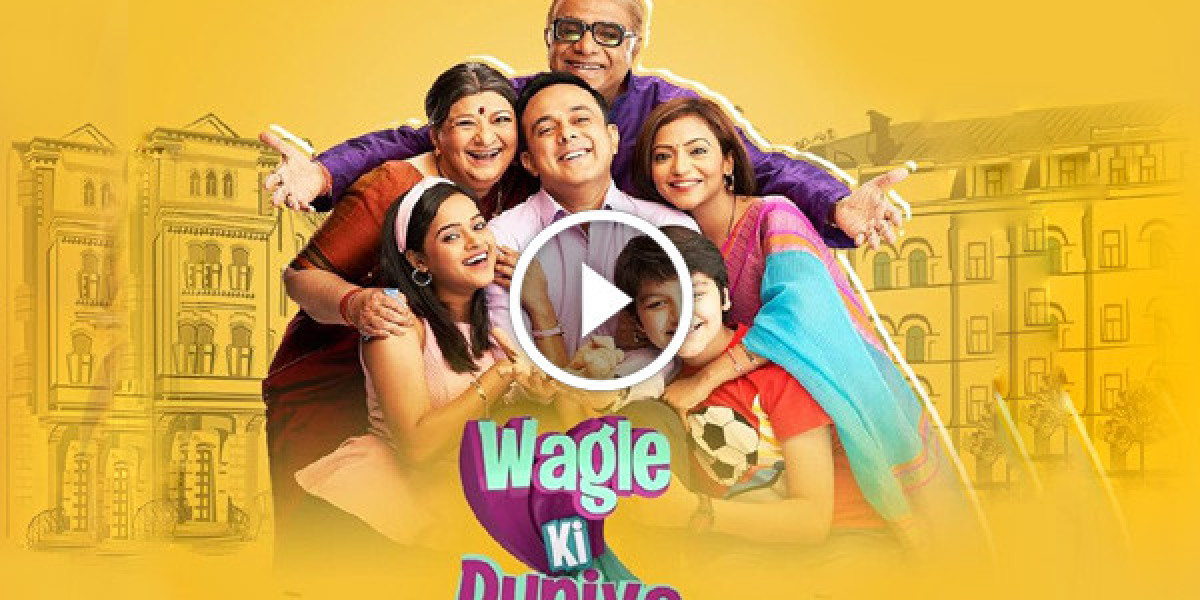Television in India has a rich history of iconic shows that have not only entertained but also reflected the societal ethos of their times. One such timeless gem is "Wagle Ki Duniya," a show that resonated deeply with viewers for its realistic portrayal of middle-class life and its protagonist's everyday struggles. Spanning from its inception to its enduring legacy, this article delves into the intricacies of "Wagle Ki Duniya," exploring its themes, characters, impact, and significance in the landscape of Indian television.
Inception and Concept
"Wagle Ki Duniya" was originally conceptualized by renowned writer and cartoonist R.K. Laxman, whose satirical comic strip "The Common Man" had already established him as a keen observer of Indian society. The show first aired in 1988 on DD National, India's public service broadcaster, and instantly struck a chord with audiences. The central character, Srinivas Wagle, played by veteran actor Anjan Srivastav, became a household name for his portrayal of a quintessential middle-class man navigating the challenges of urban life in Mumbai.
Themes and Narrative
At its core, "Wagle Ki Duniya" was a slice-of-life portrayal of the middle-class experience in India. The show deftly captured the everyday struggles, aspirations, and triumphs of the common man, much like Laxman's original comic strip. Whether it was dealing with bureaucratic red tape, inflation, housing issues, or societal norms, each episode of "Wagle Ki Duniya" offered a nuanced commentary on the fabric of Indian society in the late 1980s and early 1990s.
The narrative was driven by Srinivas Wagle, a character who embodied the virtues of honesty, integrity, and perseverance. His interactions with family members, neighbors, and colleagues provided a microcosm of Indian society, reflecting the complexities and contradictions of everyday life.
Characters and Cast
Apart from Anjan Srivastav's stellar portrayal of Srinivas Wagle, the show boasted a talented ensemble cast. Srinivas's wife, Radhika Wagle, played by Bharati Achrekar, was a supportive and resourceful partner, balancing the demands of family and work with grace. Their children, Vandana (played by Sulbha Arya) and Vinayak (essayed by Aanjjan Srivastav), represented the aspirations and challenges faced by the younger generation growing up in a rapidly changing India.
The supporting characters, including neighbors, colleagues, and bureaucrats, were intricately woven into the narrative, adding layers of humor, drama, and social commentary. Each character contributed to the show's rich tapestry, highlighting different facets of Indian society and culture.
Cultural Impact
"Wagle Ki Duniya" not only entertained viewers but also sparked conversations about pertinent social issues. The show's ability to blend humor with realism endeared it to audiences across generations. It tackled themes such as corruption, unemployment, gender dynamics, and generational divides with sensitivity and wit, making it relevant even decades after its original broadcast.
Moreover, "Wagle Ki Duniya Watch Online" paved the way for other socially relevant shows on Indian television, setting a benchmark for quality storytelling and nuanced character development. Its influence can be seen in subsequent shows that aimed to capture the essence of middle-class life in India, albeit with varying degrees of success.
Legacy and Remakes
Despite its relatively short initial run, "Wagle Ki Duniya" left an indelible mark on Indian television. The show's reruns continued to attract viewers long after it went off the air, testament to its enduring appeal. In 2021, Sony SAB revived the iconic series with a modern adaptation titled "Wagle Ki Duniya - Nayi Peedhi Naye Kissey," which introduced a new generation of viewers to the charm of Srinivas Wagle and his family.
The remake retained the essence of the original while addressing contemporary issues faced by the middle class in a digital age. The critical and commercial success of the reboot underscored the timeless relevance of "Wagle Ki Duniya" and its ability to resonate with audiences across different eras.
Conclusion
In conclusion, "Wagle Ki Duniya" stands as a testament to the power of storytelling in reflecting and shaping societal consciousness. Through its relatable characters, poignant narratives, and incisive commentary, the show captured the essence of middle-class life in India with honesty and empathy. It remains a cherished memory for those who grew up watching it and continues to inspire new generations of storytellers and audiences alike.
As Indian television evolves, "Wagle Ki Duniya" serves as a reminder of the enduring appeal of narratives rooted in everyday experiences and the importance of addressing societal issues through the medium of entertainment. Its legacy lives on, not just in reruns and remakes, but in the hearts and minds of viewers who recognize its contribution to shaping the cultural fabric of the nation.
Through its exploration of "Wagle Ki Duniya," this article has sought to celebrate the show's legacy while honoring its impact on Indian television and popular culture. As we look back on this iconic series, we are reminded of its ability to entertain, educate, and evoke a sense of nostalgia for a simpler time while also confronting the complexities of the human experience.



